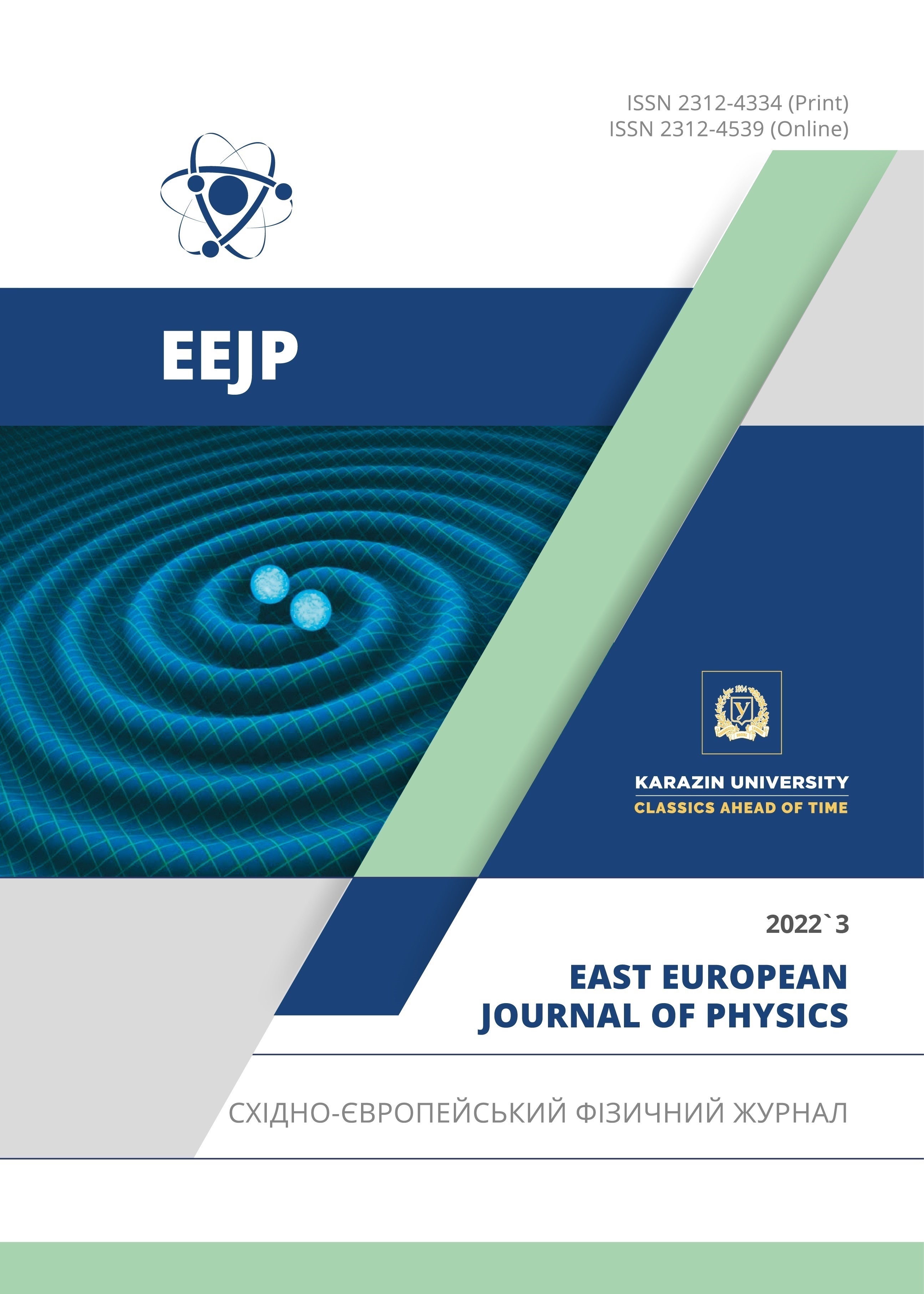Slow Surface Eigenmodes Directed by the Mu-Negative Metamaterial Slab
Abstract
The paper presents the results of the study of slow surface electromagnetic waves directed along the flat mu-negative metamaterial slab surrounded by ordinary dielectric material. It is considered the case of isotropic and homogeneous metamaterial without losses. This metamaterial possesses the positive permittivity and the negative permeability over a definite frequency band. It is found that two surface modes of TE polarization can propagate along such waveguide structure. The dispersion properties, the spatial distribution of the electromagnetic field, as well as the phase and group velocities of these slow modes are studied. The first mode is a conventional forward wave, and has a lower frequency and lower phase velocity than the second mode. The second mode may have zero group velocity at a certain frequency. Characteristics of these surface modes for different values of the mu-negative slab parameters have been studied. The studied surface electromagnetic waves can be used for practical applications as in laboratory experiments, as in various technologies.
Downloads
References
I.V. Shadrivov, M. Lapine, and Y.S. Kivshar, editors, Nonlinear, tunable and active metamaterials (Springer, 2015). https://link.springer.com/book/10.1007/978-3-319-08386-5
R. Ruppin, Phys. Lett. A, 277, 61 (2000). https://doi.org/10.1016/S0375-9601(00)00694-0
J.A.Girón-Sedaset al., Superlattices and Microstructures, 117, 423 (2018). https://doi.org/10.1016/j.spmi.2018.03.062
S.Manjunathet et al., Adv. Optical Mater. 8, 1901658 (2020). https://doi.org/10.1002/adom.201901658
S.F. Mahmoud, and A.J. Viitanen, Progress in Electromagnetics, 51, 127 (2005). https://doi.org/10.2528/PIER03102102
V.K. Galaydych, N.A. Azarenkov, V.P. Olefir, and A.E. Sporov, Problems of Atomic Science and Technology, 1, 96 (2017), https://vant.kipt.kharkov.ua/ARTICLE/VANT_2017_1/article_2017_1_96.pdf
Y. Cho; S. Lee; D.-H. Kim; H. Kim; C. Song; S. Kong; J. Park; C. Seo; and J. Kim, IEEE Transactions on Electromagnetic Compatibility, 60(4), 1001 (2018). https://doi.org/10.1109/TEMC.2017.2751595
K.L. Tsakmakidis et al., Physical Review B 73, 085104 (2006). https://doi.org/10.1103/PhysRevB.73.085104
V.K. Galaydych, N.A. Azarenkov, V.P. Olefir, and A.E. Sporov, East Eur. J. Phys. 3, 145 (2021). https://doi.org/10.26565/2312-4334-2021-3-22
J.B. Pendry et al., IEEE Trans. MTT-47, 2075 (1999). https://doi.org/10.1109/22.798002
R. Yahiaoui et al., Appl. Phys. A, 114, 997 (2014). https://doi.org/10.1007/s00339-013-8033-4
V. Galaydych, and M. Azarenkov, Appl. Phys. B, 128, 132 (2022). https://doi.org/10.1007/s00340-022-07854-3
Copyright (c) 2022 Viktor K. Galaydych, Oleksandr E. Sporov, Volodymyr P. Olefir, Mykola O. Azarenkov

This work is licensed under a Creative Commons Attribution 4.0 International License.
Authors who publish with this journal agree to the following terms:
- Authors retain copyright and grant the journal right of first publication with the work simultaneously licensed under a Creative Commons Attribution License that allows others to share the work with an acknowledgment of the work's authorship and initial publication in this journal.
- Authors are able to enter into separate, additional contractual arrangements for the non-exclusive distribution of the journal's published version of the work (e.g., post it to an institutional repository or publish it in a book), with an acknowledgment of its initial publication in this journal.
- Authors are permitted and encouraged to post their work online (e.g., in institutional repositories or on their website) prior to and during the submission process, as it can lead to productive exchanges, as well as earlier and greater citation of published work (See The Effect of Open Access).








